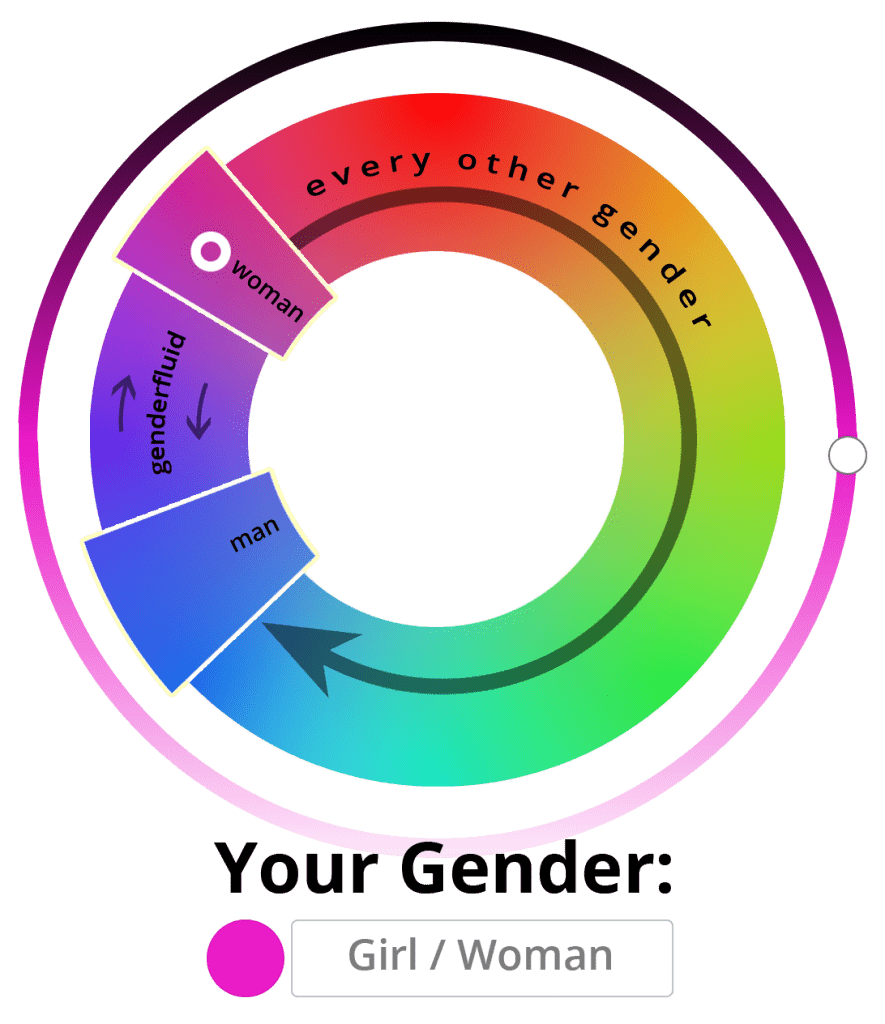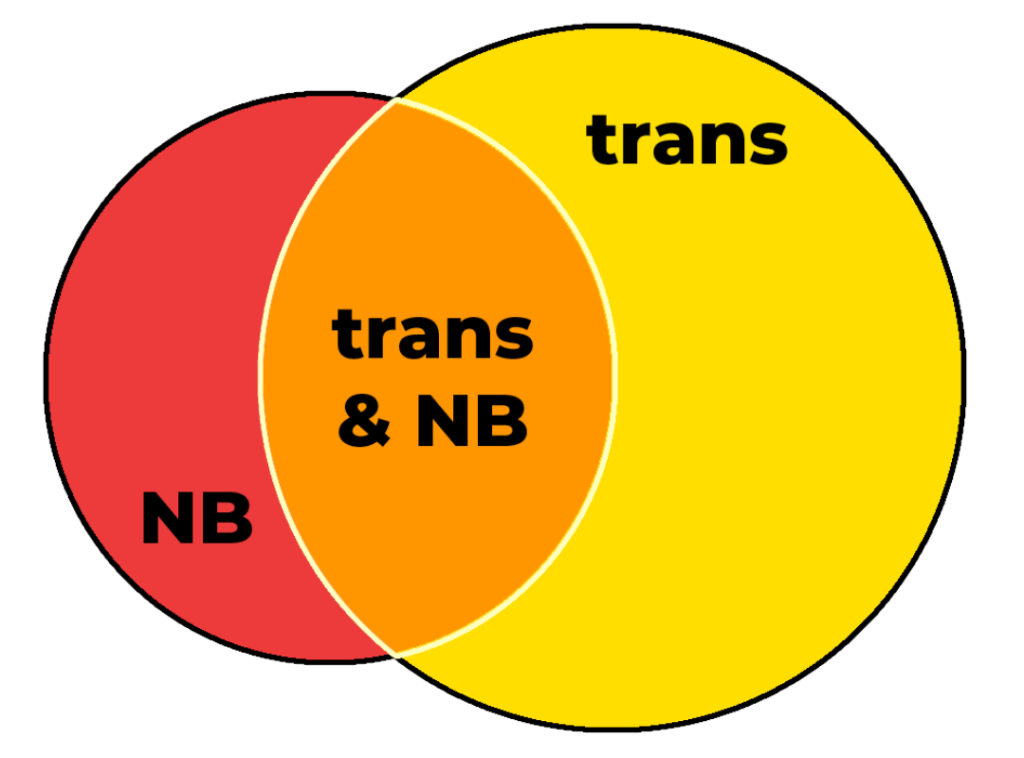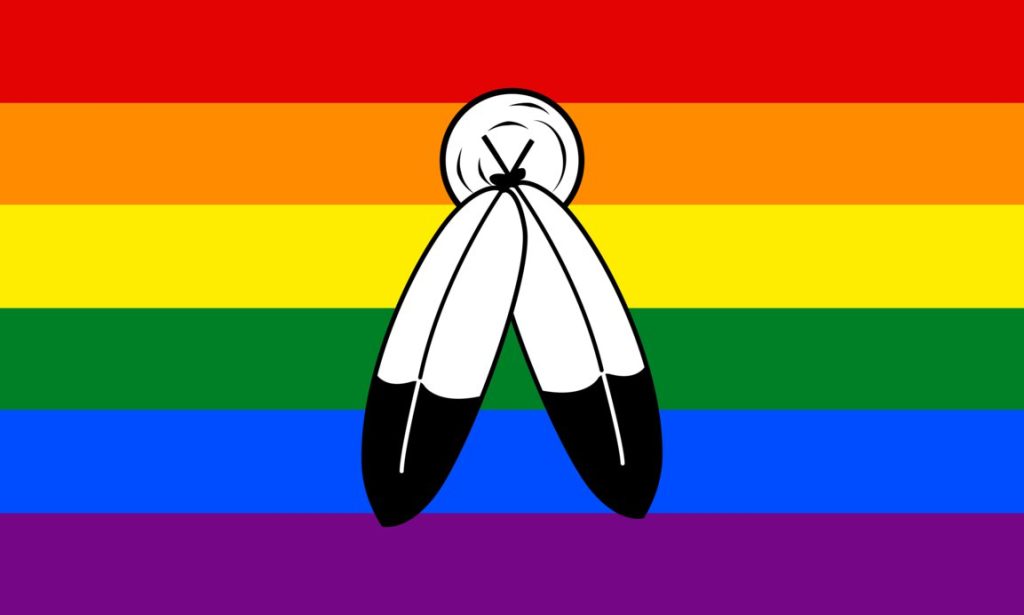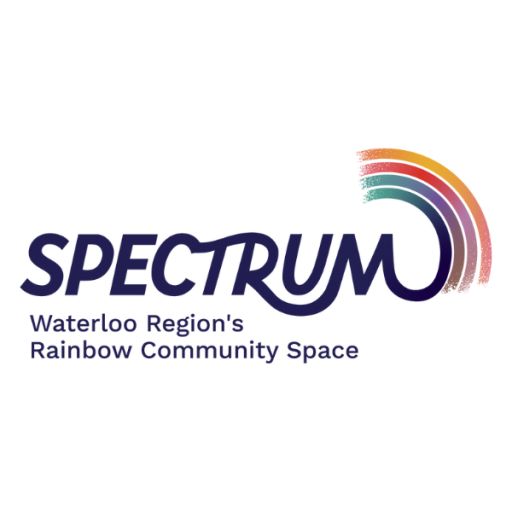
In our RDT 101 course, we presented the colour wheel model of gender as an alternative to thinking about gender as a straight line between pink and blue. When gender is a colour wheel, women can still be pink and men can still be blue, but you also have an entire rainbow of alternative colours.
This model is much more inclusive of non-binary gender; as a term that means simply “any person with a gender that is not a binary gender of ‘man’ or ‘woman'”, non-binary is an umbrella term that encompasses a vast range of experiences.
Some more common non-binary genders
Non-binary people are not a monolith; there are many different non-binary genders, and many different ways of experiencing non-binary gender. Here are some more common non-binary genders:
Demiboy / Demigirl: someone who partially but not completely identifies with a binary gender, but doesn’t particularly identify with any other gender.
Genderfluid: someone whose gender identity changes over time.
Bigender: someone who has two (or more) genders at the same time.
Neutrois: someone whose gender identity is neutral. Neutrois is different than agender! Agender people don’t have a gender, whereas neutrois people have a gender, it’s just that that gender is neutral.
Genderqueer: an identity that is becoming less common, referring to anyone whose gender is queer or the queering of gender.
Masc / femme: terms used to refer to people whose expression leans toward a binary gender but who do not identify with that gender.
Culture-specific gender: a gender identity specific to a certain cultural group.
There are as many different gender and sexual identities as there are individual people. The world is not black and white. We live in shades of grey. People are complicated and they change over time. Remember the Platinum Rule: Treat others as they would like to be treated.

What is the difference between non-binary and transgender?
Non-binary people may identify as trans because no one is assigned non-binary at birth and coming out as non-binary often comes with a degree of social transition or a shift in one’s gender expression.
Additional things to remember:
- You do not have to have dysphoria to be trans (not all trans people do), but some non-binary people experience dysphoria and choose to pursue some aspects of medical transition. Many of those people identify as both non-binary and transgender.
- Non-binary isn’t “a new thing” invented on “Tumblr” or “TikTok”. The North American gender binary is a product of white supremacist colonialism, and cultures around the world have had traditions of non-binary gender for thousands of years, of which Two-Spirit Indigenous Canadians are just one example. Additional examples include Hijra (Indian), Xgender (Japanese), and Māhū (Polynesian).
- You don’t have to look androgynous to be non-binary. Non-binary people can be AFAB, AMAB, or Intersex, and can have any gender expression imagineable.
What is Two-Spirit / 2-Spirit?

Two-Spirit is an umbrella term referring to a constellation of nation-specific traditions of gender and sexuality common to many Indigenous peoples. According to the Two-Spirit Society of Denver:
“Two-Spirit refers to another gender role believed to be common among most, if not all, first peoples of Turtle Island (North America), one that had a proper and accepted place within native societies. This acceptance was rooted in the spiritual teachings that say all life is sacred.”
The term Two-Spirit is a recognition that European colonizers enforced the use of language and a culture that was homophobic, binary-centric, and misogynistic.
The growth of Two-Spirit as an identity represents a reclamation of pre-colonial traditions of gender and sexuality.

